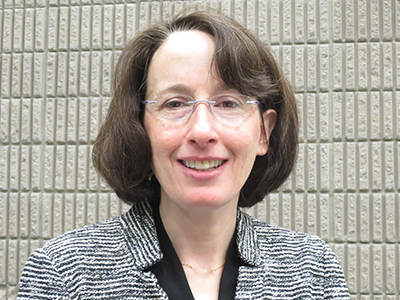
“There are strong, visible, women thought leaders in interventional radiology, but a closer look at the numbers is revealing. There are too few women in interventional radiology,” Meridith Englander, Vascular and Interventional Radiology, Albany Medical Center, New York, USA, tells Interventional News. Englander is chair of the recently formed Women in IR section of the Society of Interventional Radiology (SIR).
The Women in IR section has a mission to advance and promote women in interventional radiology by increasing the number of women in interventional radiology; encourage women to enter leadership positions in SIR; educate women in research and clinical methods; offer career development assistance; and provide a networking forum.
As written by Englander in a blog post for the SIR: “As long as interventional radiology has been a specialty, there have been women interventional radiologists. Three of the founding fellows of the Society of Cardiovascular and Interventional Radiology (SCVIR) were women. Helen C Redman; Ethel J Finck; and Renate L Soulen were among the first class of SCVIR Fellows. Of the 40 Society of Interventional Radiology presidents, four have been women. Arina Van Breda, was the first in 1992–93, followed by Anne C Roberts (1996–97); Janette D Durham (2004–05); and Katharine L Krol (2006–07). Despite their presence and prominence, women are a distinct minority in the interventional radiology world. Only 9% of interventional radiologists are women.”
In an interview with Interventional News, Englander said: “Unlike other fields of medicine in which women are under-represented, the number of trainees is also at only about 9%. So we are very stagnant and stable and it has been like this for a long time. Other fields of medicine in which women are under-represented include orthopaedic surgery, neurosurgery, interventional cardiology and vascular surgery – and all these fields have fewer numbers of women, but the percentages of women in their training programmes are growing and that is not happening in interventional radiology. These other specialties have actually made efforts—they have acknowledged, years ago, that they need to attract women. If interventional radiology wants to continue to attract top doctors, you have to attract women.”
Englander further added that “Interventional radiology is perceived to be a male dominated field.” She referred to a poster displayed at the Society of Interventional Radiology’s annual meeting in earlier in 2015 that surveyed medical students to see why they may (or may not) be interested in going into interventional radiology. Factors such as being on call and long hours were among the reasons students did not want to enter the field, noted the poster. “However, I do not necessarily think this scares all women away. For instance, the residency that has the highest percentage of women, is obstetrics and gynaecology, and that is not an easy lifestyle specialty. There is fear of radiation, which I think is reasonable, but there are data from surveys to show that being an interventional radiologist is safe. Also, there is this perception on the poster that this a male dominated field,” reiterates Englander.
Girls like toys too
Interventional radiology is a field that is intrinsically linked to technology and tools. Might there be a gadgetry-focus in interventional radiology that is somehow perceived as being more appealing to men? Englander disagrees. Interventional radiology is an awesome field in which we do great procedures and take care of patients. And girls like to play with toys too, so I think this can appeal to women as well.”
Englander adds: “I do not think we will ever have parity in terms of the numbers, but I think a lot more women, if they are encouraged to consider interventional radiology, will opt for it. I think what other specialists have realised is a major problem is that women are not encouraged to go into these fields. There is a need for subtle cultural changes to be made. There are subconscious biases. In a field in which there are many male interventional radiologists, there is a tendency or mindset to want to mentor people who are just like them [ie other men]. At the moment, there is a small number of women and there really needs to be a critical mass of women in interventional radiology so that women feel like they belong and that their values matter. There is currently a sense of isolation because you can be a woman in interventional radiology and have no regular contact with or know any other women interventional radiologists. I think women need to see other women being a face in interventional radiology; that is going to make a big difference. If you can see someone doing it who looks like you, then you can see yourself doing it. Increasing the presence of women in interventional radiology will help bring more women into the field.”










